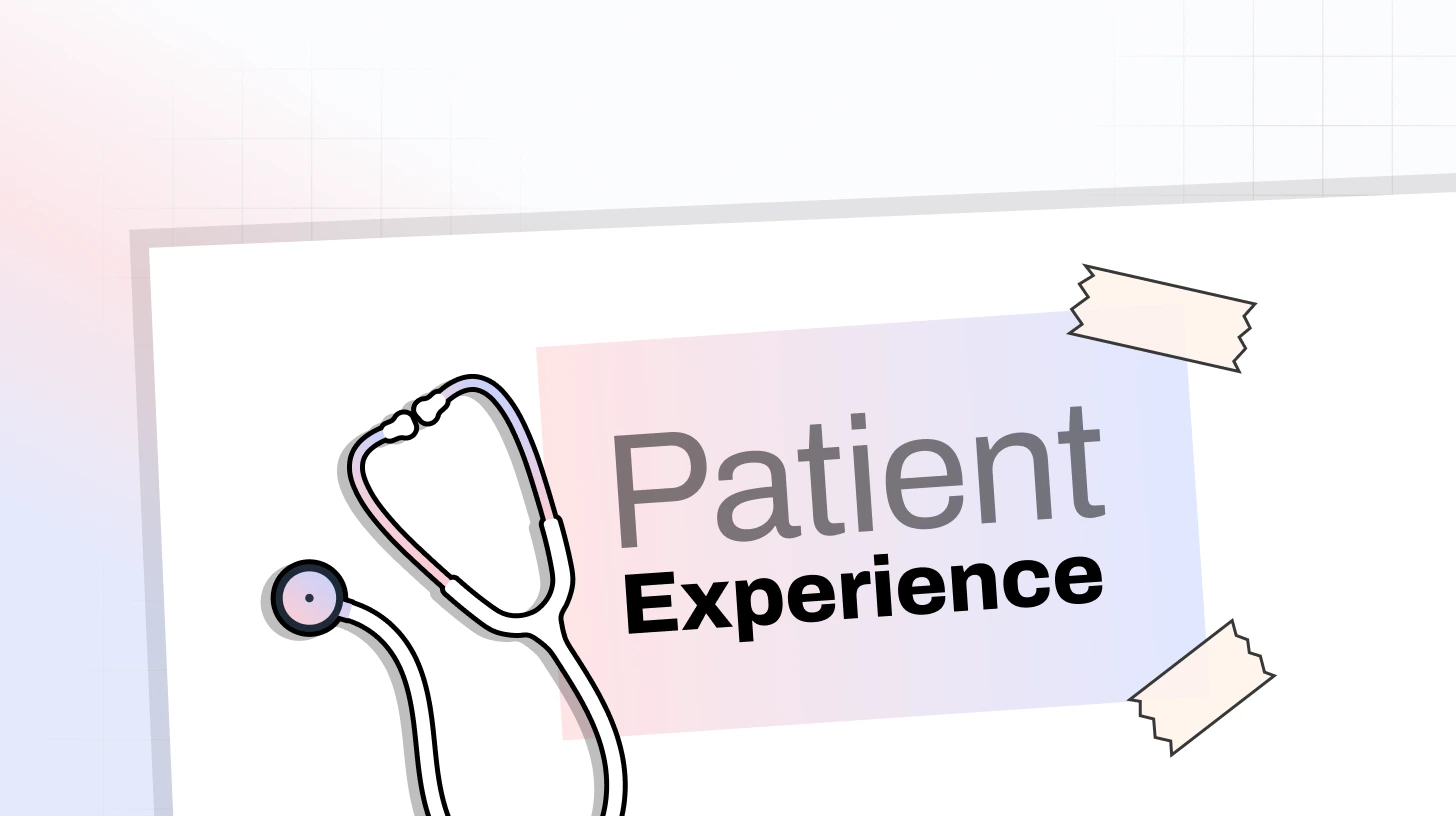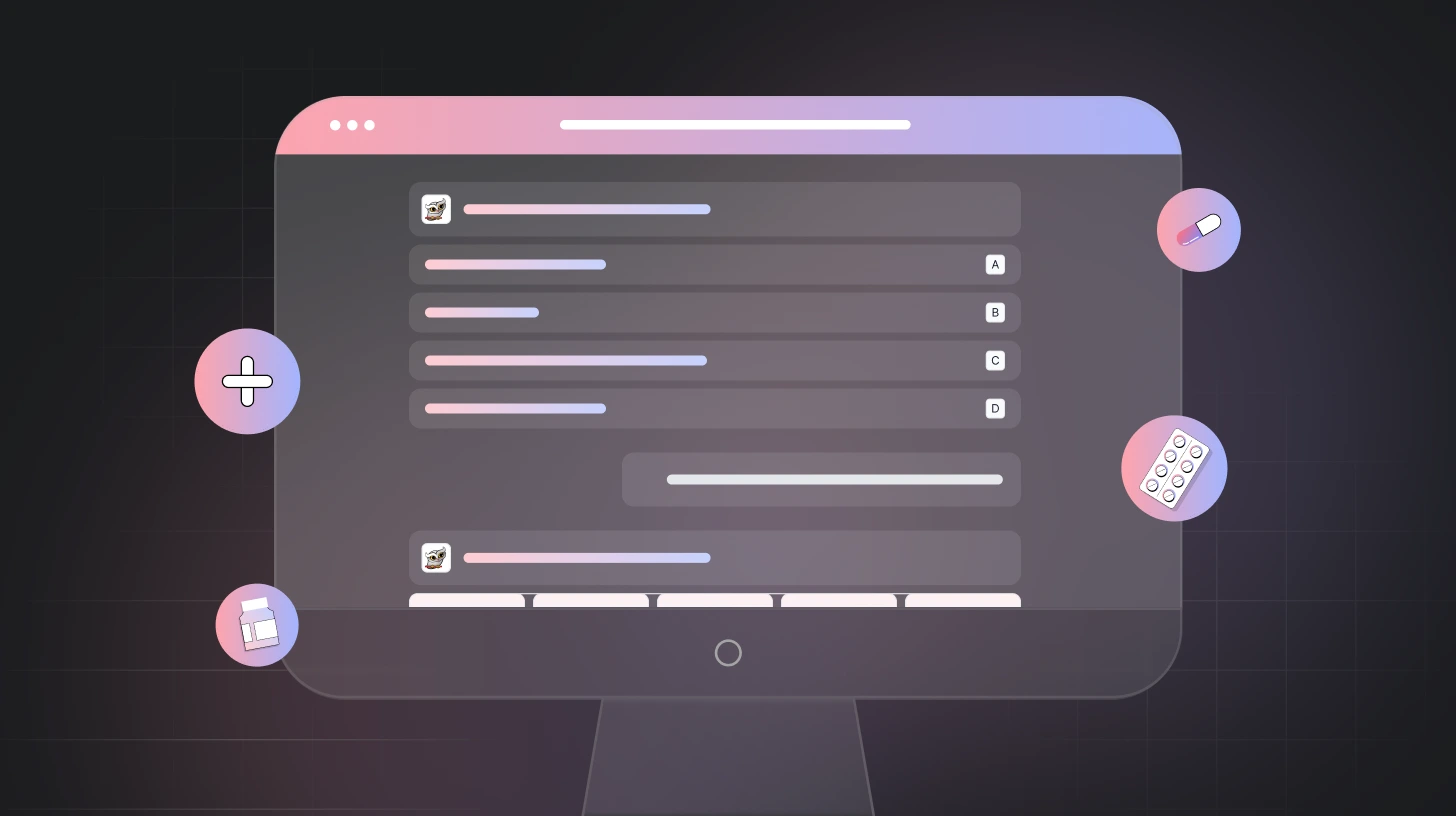 Blog
Blog Hospital Surveys: The #1 Tool for Patient Satisfaction
Hospital Surveys: The #1 Tool for Patient SatisfactionHospital Surveys: The #1 Tool for Patient Satisfaction

Here's what most hospitals get wrong about patient satisfaction. They assume great medical care automatically equals happy patients. However, hospital surveys reveal a surprising fact: there's often a massive gap between the care you think you're providing and what patients actually experience.
Recent data from The Beryl Institute's 2023 PX Pulse Survey reveals a striking reality: only 41% of Americans rate their healthcare as "good" or "very good."
Healthcare quality perceptions dropped 5 percentage points in just six months. Overall care experience ratings hit the lowest levels since tracking began in 2019. These numbers tell a clear story about where the industry stands today.
Smart hospitals already know the secret to turning things around. They collect targeted feedback after every patient visit. They analyze what matters most to people receiving care. They use that data to create experiences patients actually recommend to friends and family.
This guide shows you exactly how to build hospital surveys that work. You'll discover proven methods for gathering feedback that drives measurable improvements in patient satisfaction and care quality.
What Are Hospital Surveys?
Hospital surveys collect targeted feedback from patients about their healthcare experiences. They measure specific touchpoints across the patient journey—from appointment scheduling to discharge follow-up.
The Consumer Assessment of Healthcare Providers and Systems (CAHPS) program sets standards for these surveys. CAHPS helps hospitals benchmark performance and compare results across facilities.
These surveys ask about communication with providers, wait times, facility cleanliness, and overall satisfaction. Patients share their perspectives on care quality, staff interactions, and service delivery.
Lastly, hospital surveys differ from general customer feedback. They focus on healthcare-specific experiences and outcomes that directly impact patient wellbeing.
How Hospital Surveys Drive Real Patient Growth
Patient feedback drives quality improvements across healthcare organizations. Here's why hospital surveys make such a big difference:
- Direct patient voice: Surveys capture authentic patient perspectives. You hear exactly what matters to people receiving care at your facility.
- Quality improvement data: Feedback identifies specific areas needing attention. Maybe patients wait too long for appointments, or discharge instructions lack clarity.
- Staff performance insights: Surveys reveal how well healthcare teams communicate and deliver care. This helps identify training needs and recognize excellence.
- Regulatory compliance: Many accreditation bodies require patient feedback collection. Hospital surveys help meet these requirements while improving care quality.
- Competitive advantage: Organizations using patient feedback consistently outperform competitors. Better patient experiences lead to stronger reputations and increased referrals.
Research shows that most healthcare professionals believe understanding patient experiences matters more now than before the pandemic. Meanwhile, more than half of patients say word-of-mouth referrals significantly impact their healthcare choices.
Common Types of Hospital Surveys
Below are the different survey types that serve various purposes across healthcare organizations:
Patient Satisfaction Surveys
These comprehensive assessments evaluate overall patient experiences. They cover appointment scheduling, provider communication, facility quality, and care outcomes.
CAHPS Hospital Survey (H-CAHPS)
The standardized survey measures patient perspectives on hospital care. It covers communication with nurses and doctors, responsiveness of staff, pain management, and discharge information.
Post-Discharge Surveys
These track patient recovery and identify ongoing concerns after leaving the hospital. They assess follow-up care effectiveness and catch potential complications early.
Department-Specific Surveys
Emergency rooms, outpatient clinics, and specialty departments each need targeted feedback. These surveys address unique aspects of different care settings.
Employee Engagement Surveys
Staff satisfaction directly impacts patient experiences. These surveys measure healthcare worker engagement and identify workplace improvement opportunities.
Net Promoter Score (NPS) Surveys
NPS measures patient loyalty by asking how likely they are to recommend your hospital. This simple metric provides powerful insights into overall satisfaction.
Step-by-Step Process for Creating Effective Hospital Surveys
Follow this framework to build surveys that generate actionable insights:
Step 1: Define Clear Objectives
Start with specific goals. Are you measuring overall satisfaction, evaluating a new service, or addressing specific patient complaints? Clear objectives guide question selection and survey design.
Step 2: Choose Your Survey Method
Select the best distribution approach for your patient population:
- Email surveys reach patients efficiently after visits
- In-person surveys capture immediate feedback
- Phone surveys work well for older patients
- Mobile apps provide convenient access for tech-savvy patients
Step 3: Design Focused Questions
Keep surveys short and relevant. Mix question types for comprehensive feedback:
- Rating scales for quantitative data
- Open-ended questions for detailed insights
- Multiple choice for easy completion
Step 4: Ensure HIPAA Compliance
Protect patient privacy throughout the survey process. Use secure platforms, maintain anonymity, and follow all healthcare data regulations.
Step 5: Test and Refine
Pilot your survey with a small patient group. Identify confusing questions, technical issues, or completion barriers before full deployment.
Step 6: Deploy Strategically
Time surveys appropriately. Send them within hours of patient interactions while experiences remain fresh. Avoid survey fatigue by limiting frequency.
Hospital Survey Templates and Example Questions
Here are proven question examples across key areas:
Overall Experience
"On a scale of 1-10, how would you rate your overall experience at our hospital?"
Communication Quality
"Did your doctor explain your condition and treatment in terms you could understand?"
- Always
- Usually
- Sometimes
- Never
Wait Times
"How long did you wait before being seen by a healthcare provider?"
- Less than 15 minutes
- 15-30 minutes
- 30-60 minutes
- More than 60 minutes
Staff Courtesy
"How would you rate the courtesy and helpfulness of our nursing staff?"
- Excellent
- Very Good
- Good
- Fair
- Poor
Facility Quality
"How would you rate the cleanliness of your patient room and bathroom?"
Discharge Preparation
"Before leaving the hospital, did staff explain your medications and follow-up care clearly?"
Likelihood to Recommend
"How likely are you to recommend our hospital to family and friends?"
Best Practices for Hospital Survey Success

Keep It Short: Limit surveys to 10 questions or fewer. Patients appreciate brevity and complete shorter surveys more often. Research shows completion rates drop by 20% for every 5 additional questions you add.
Use Simple Language: Avoid medical jargon. Write questions at an 8th-grade reading level for broad accessibility. Remember that stress and pain can make complex language even harder to understand for patients.
Guarantee Anonymity: Patients share honest feedback when they feel safe. Clearly communicate privacy protections. Include a brief statement at the start explaining how responses remain confidential and separate from medical records.
Time It Right: Send surveys within 24-48 hours of patient interactions. Fresh memories provide more accurate responses. Waiting longer than a week can reduce response accuracy by up to 40% as details fade.
Mix Question Types: Combine rating scales with open-ended questions. This gives you both quantitative data and qualitative insights. Start with easy rating questions to build momentum, then include one or two open-ended questions for deeper feedback.
Test Mobile Compatibility: Many patients use smartphones. Ensure surveys work perfectly on all devices. Over 60% of patients now complete surveys on mobile devices, making responsive design critical for success.
Follow Up Appropriately: Don't oversample patients. Space surveys appropriately to avoid fatigue. Limit each patient to one survey per quarter unless they specifically request to provide additional feedback.
Read - Hospital Survey Questions: 50+ Examples That Improve Patient Care
Common Mistakes to Avoid
Leading Questions: Don't bias responses with loaded language. Ask neutral questions that allow honest feedback. For example, instead of asking "How satisfied were you with our excellent nursing staff?" simply ask "How would you rate the quality of care from your nursing team?" The difference seems small but impacts response authenticity significantly.
Too Many Questions: Long surveys get abandoned. Focus on essential information only. Patients already feel overwhelmed by their healthcare experience - don't add to that burden with endless questions.
Poor Timing: Surveys sent weeks after visits receive lower response rates and less accurate data. Memory fades quickly, especially when patients are dealing with health concerns. Send surveys within 48 hours while the experience remains vivid and actionable.
Ignoring Results: Collecting feedback without taking action damages patient trust. Always close the feedback loop. Patients who see no changes after providing feedback often refuse to participate in future surveys, creating a cycle of declining response rates.
One-Size-Fits-All Approach: Different departments need different questions. Customize surveys for specific care settings. Emergency room experiences differ vastly from routine checkups - your survey questions should reflect these unique patient journeys and departmental goals.

How TheySaid Transforms Hospital Survey Management
Traditional survey tools often fall short in healthcare settings. TheySaid's AI-powered platform addresses these challenges with intelligent features designed for hospital environments.
Our system automatically analyzes patient feedback, identifies key themes, and prioritizes action items. This saves hours of manual review while ensuring no critical feedback gets missed.
TheySaid integrates seamlessly with existing hospital systems, maintains HIPAA compliance, and provides real-time insights that drive immediate improvements.
Healthcare organizations using TheySaid see significant improvements in patient satisfaction scores and operational efficiency.
Key Takeaways
- Hospital surveys provide direct patient feedback that drives quality improvements
- CAHPS standards help benchmark performance across healthcare organizations
- Short, focused surveys generate better response rates and actionable data
- HIPAA compliance and patient privacy must guide all survey activities
- Regular feedback collection creates continuous improvement cycles
Frequently Asked Questions
Q: How often should hospitals conduct patient surveys?
A: Best practice involves sending surveys after every significant patient interaction, such as inpatient stays, emergency visits, or outpatient procedures. However, avoid oversurveying the same patients within short timeframes to prevent survey fatigue.
Q: What response rate should hospitals expect from patient surveys?
A: Hospital survey response rates typically range from 15-30% for email surveys and 40-60% for phone surveys. Higher response rates indicate better patient engagement and survey design quality.
Q: How can hospitals improve survey response rates?
A: Keep surveys short (under 10 questions), send them within 24-48 hours of patient visits, use simple language, ensure mobile compatibility, and clearly explain how feedback will be used to improve care.
Q: What makes hospital surveys HIPAA compliant?
A: HIPAA-compliant hospital surveys use secure data transmission, maintain patient anonymity, include proper privacy notices, store data securely, and limit access to authorized personnel only.
Q: How should hospitals act on survey feedback?
A: Analyze data regularly, identify improvement priorities, create action plans with specific timelines, communicate changes to staff, and follow up with patients about improvements made based on their feedback.
















.svg)